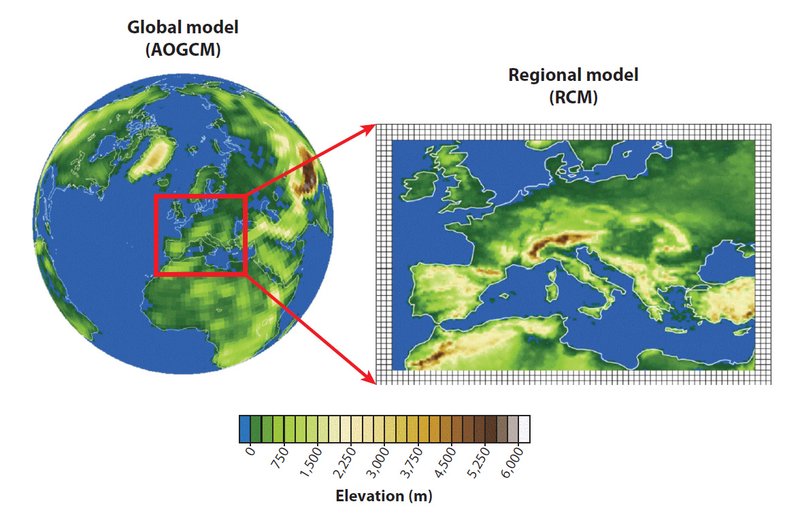Climate Models
Global climate models (GCMs) are based on general physical principles of fluid dynamics and thermodynamics, are originate on numerical weather prediction. GCMs describe interactions between components of global climate system; atmosphere, oceans and a basic description of the earth's surface (for example, aspects of the biosphere and lithosphere that are relevant to the surface energy balance). They can sometimes be collectively referred to Atmosphere-Ocean GCMs (AOGCM). Regional climate models (RCM) at higher resolution over a limited area. Such models are used in downscaling global climate results over specific regional domains.
Regional climate models (RCM), forced by global climate models (GCM), allow to solve physical processes into smaller ranges and consequently with increased detail and realism when compared with results from global models. Global models, which describes effects of the large-scale atmospheric circulation and processes, determines sequence of weather events that characterize the climate of a particular region. These features are result of greenhouse gases, variations on solar activity and volcanic eruptions. RCMs forced with result of GCM, allow the study of regional processes and generate information relevant scales for vulnerability studies, impacts and adaptation.
Each of regional climate models, RCM was forced by different models (CNRM-CM5, ICHEC-EC-EARTH, IPSLCM5A- MR, HadGEM2-ES, MPI- ESM-LR). Two RCM (CCLM and RCA4 models) were forced with three different GCMs, providing information from 1971 to end of the twenty-first century. Configuration and differences in parameterization schemes of regional models available (CCLM4-8-17: Rockel et al. 2008, Dobler and Ahrens, 2008; HIRHAM5: Christensen et al. 1996, 2006; RACMO22E: Meijgaard van et al. 2012; RCA4: Samuelsson et al. 2011; WRF version 3.3.1: Skamarock et al. 2008).

Figure 1. RCM domain embedded in GCM grid. Image source: Giorgi and Gutowski, Regional Downscaling and the Cordex Initiative 2015.
A set of regional simulations of the CORDEX project, carried out for the European area (EURO-CORDEX), is available for; a) the historical period (1971-2005); b) two scenarios of emission of the IPCC AR5 report, RCP 4.5 and RCP 8.5, (2006-2100); c) as well as the monitoring period (1989-2008). For historical period and respective future scenario simulations are nine and five for the evaluation scenario. Simulations owning spatial resolution of 0.11º and daily temporal resolution.